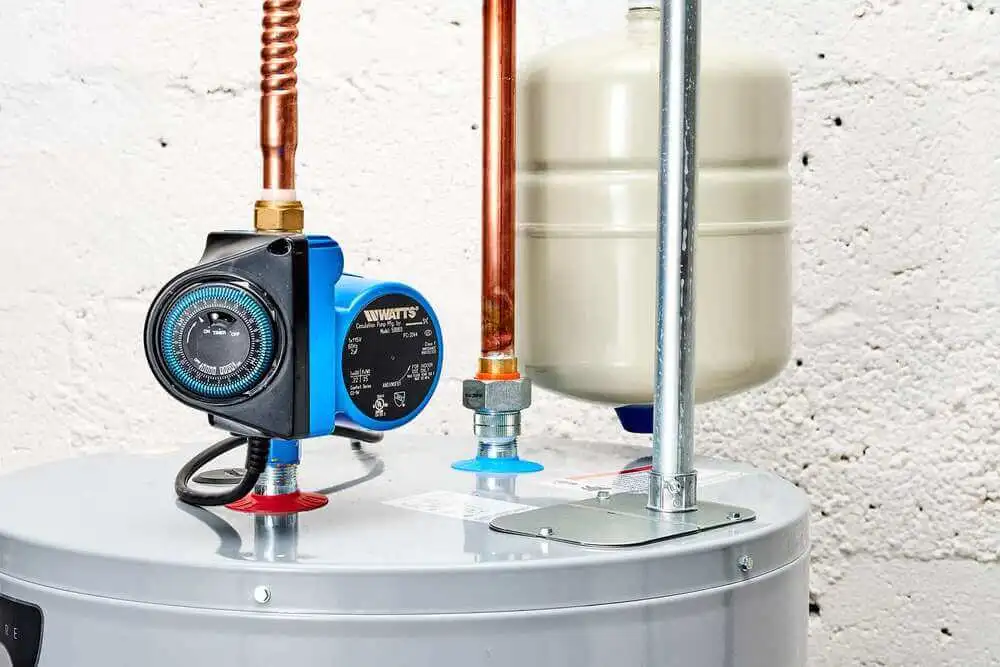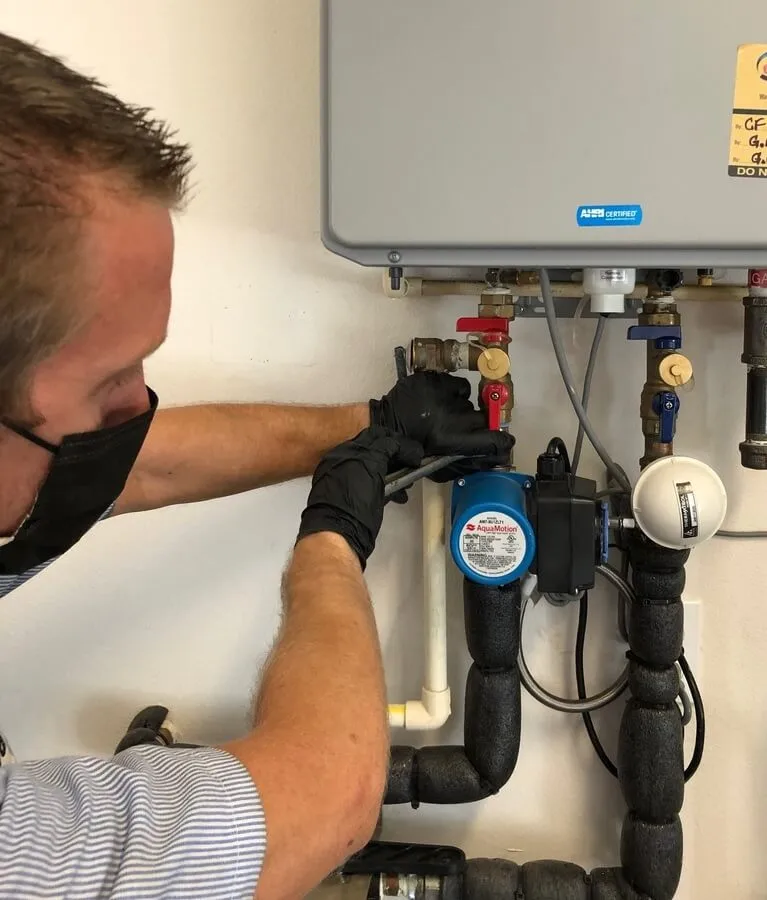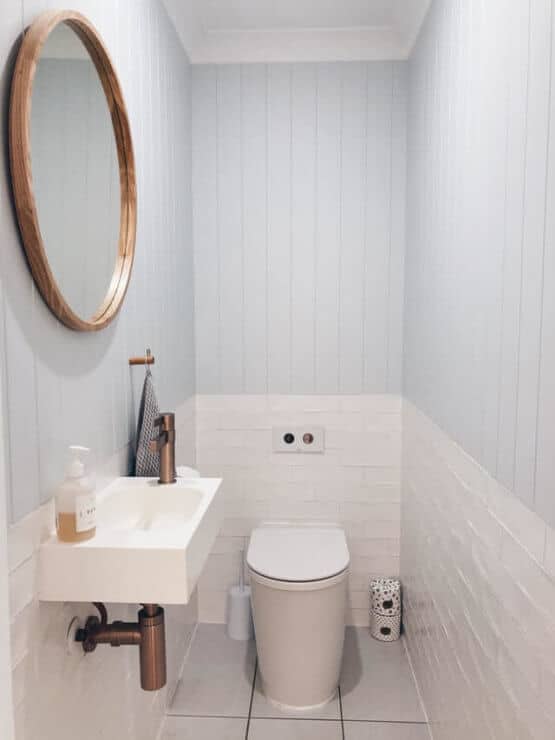There are many benefits to installing a hot water recirculation pump like instant hot water, energy savings and water conservation. However, hot water recirculation system problems may cause bad performance and efficiency.
In this article, we delve into the world of hot water recirculation system problems, exploring common issues that homeowners and businesses may encounter. From temperature fluctuations to pump malfunctions, we’ll uncover the challenges that can arise and provide insights into how to identify, address, and prevent these problems to keep your hot water flowing smoothly.
What Does a Hot Water Circulation Pump Do?

If you don’t own a circulation pump, you might have noticed that your faucet won’t instantly give you hot water. The water running from the tap will be cold until the warm water from your water heater reaches it. During the months, thousands of gallons of water end up wasted while you’re waiting for your hot water. This is not just bad for the environment, but for your money, as well.
This problem is solved by a hot water circulation pump – or a recirculation pump. These pumps help circulate hot water continuously, which will keep the water in your pipes hot at all times and ready to be used instantly.
This means that once you open the pipes, the hot water will run instantly instead of having to wait a few seconds for it to arrive.
In other words, here are the benefits of installing the hot water circulation pump:
- They are convenient
- They reduce wasted water
- They are easy to install
- Also, they are very easy to use
- There are many various models available
Of course, no product is perfect. Other than some hot water recirculation system problems you might experience, here are a few flaws of these pumps:
- They are expensive
- They consume a lot of power
- There will be some heat loss
Read More: Pros and Cons Of Hot Water Recirculation Pump
Hot Water Recirculation System Problems

Most common hot water recirculation system problems include excess noice, low flow rate, corrosion and wasted water.
- Excess Noise
Excess noise in a hot water recirculation pump can be an annoying and disruptive issue that homeowners or tenants may encounter. The noise can vary in intensity and type, from humming or buzzing sounds to loud rattling or knocking.
If you have a hot water recirculation pump constantly running (as is the case when you don’t own the hot water recirculating pump check valve), you will likely notice if it becomes noisy all of a sudden. A noisy pump can be something to worry about. Here are a few things that might cause a buzzing noise:
- There is air in the recirculation system
- The pumps might be oversized or undersized
- The bearings are worn out
- Clogged system
If there is air in the system, it needs to be bled out. Otherwise, the pump might become additionally damaged.
If the mump is oversized, the best thing to do is to throttle the pressure-side valves. You’ll know the size is right when the noise disappears. On the other hand, if the pump is undersized, you’ll need to install a larger pump.
Bearings in water pumps can produce noise if they become worn, damaged, or improperly lubricated. Bearings are essential components in pumps as they support the rotating shaft and allow it to spin smoothly. When bearings experience problems, it can result in various noises.
- Low flow rate
One of the most common hot water recirculation pump system problems is the low flow rate. This is because many of these pumps come with a small motor. If you own a tankless water heater, chances are a recirculating pump might not even be able to turn it on!
This is why you need to make sure your pump is compatible with the water heater inside your home before you install it. If the pump has a too weak motor, there is nothing you can do to increase the flow rate except to purchase a new pump. Considering how expensive these pumps are, you probably don’t want to have to do that.
Of course, you should always check the manufacturer’s manual before you decide to uninstall the existing recirculation system. For example, maybe there is something in the watts recirculating pump troubleshooting that might help you. Also, if you experience low water pressure with recirculating pump you might have a clog in your system.
- Corrosion
Corrosion is one of the biggest issues in any system that works with water. The same goes for the recirculating systems. Whenever you combine metal with water, you are bound to get a certain amount of corrosion.
This is why many modern plumbing systems have plastic instead of copper. Of course, when you’re dealing with recirculation systems, you can only choose so much.
When you have corrosion, the best thing you can do is contact a local plumber who might be able to help you. Corrosion leads to many plumbing issues, such as:
- Impure water
- Bad water pressure
- Leaks
- Ruptures
All of these problems can end up costing you much more in the long run, so it’s always better to contact a professional for help before the issue worsens.
- Wasted Power
Recirculating pumps can waste a lot of power even when they operate regularly. They tend to turn on whenever the water in the pump is too cold, which can be in the middle of the night or while you’re on a vacation and no one is using water.
However, if you notice a sudden increase in the amount of power wasted, you might have an issue with your recirculation system. Chances are there’s a leak, or that the system itself isn’t properly installed.
Make sure to inspect the entire system and find the cause. Not only will this cause your utility bills to rise, but it might also be the sign of some much more severe issue. [1]
- Insufficient Hot Water
Cause: Insufficient hot water can occur if the recirculation pump isn’t operating correctly, if the pump is undersized for the plumbing system, or if there’s a malfunction with the system’s valves or controls.
Solution: Start by checking if the pump is running as expected. Make sure the pump is appropriately sized for your plumbing system’s demands. If you’re still experiencing issues, consult a professional to inspect and potentially repair or replace the pump or other system components.
- High Energy Costs
Cause: Elevated energy bills can result from a recirculation pump that runs continuously or during non-peak times. This can be caused by improper control settings or a malfunctioning timer/sensor.
Solution: Ensure that your system is configured to operate efficiently. Adjust timers or sensors to align with your hot water usage patterns. If energy costs remain high, consult a technician to inspect and optimize the system for efficiency.
What Causes Most Hot Water Recirculation System Problems?
The ASPE conducted research that had a goal to determine the most common causes behind problems in a hot water recirculation system.
Here are the causes they’ve located:
- Water velocities larger than 2 fps
- Too small distribution lines
- Too large circulating pumps
- Abrupt changes in the fitting direction
- Improper joints
- Inability to flush out debris
- Lack of maintenance
- Improper use of balancing throttling valves
They have also found that it is a good idea to keep the water running at the optimal temperature, which is around 140oF. If the temperature is increased, so is the corrosion. While corrosion can happen in colder pipes, this seldom happens.
Related: Rheem vs AO Smith Water Heater Comparison
Signs of Hot Water Recirculation Pump Failure
One of the best ways you can prevent hot water recirculation system problems to escalate is to notice the failure signs and to act on time.
Prevention is the key to the good health of your units. Here is how you can tell that there is something wrong with your recirculation pump:
- You need to wait for hot water
- There is hot water in the cold pipe
- Cracking noise in the pump
- There is water around the pump or coming from the walls
Any of these signs mean that there is something seriously wrong with your recirculation pump, and it might be smart to call a plumber to inspect things.
Read Also: Rinnai vs Navien
The Final Word
A hot water recirculation pump can be one of the best things you can get for your home. This is an ideal way you can get hot water at all times, which can make your household more energy-efficient and green overall.
However, this doesn’t mean that some hot water recirculation system problems can’t occur. Once they do, you need to find a way to fix them as soon as possible. Otherwise, you might end up with some severe water damage or even burst pipes!
Plumbing issues are nothing to joke around, and you should take them seriously. While waiting for hot water to come even when you have a recirculating pump install seems like just a minor nuisance, it can lead to severe issues on your property.
Read Next: Marey Tankless Water Heater Problems

Michael Davis is a heating & plumbing expert who currently works as independent contractor in SC. He also writes for Plumbertip.
For almost 10 years he worked on various plumbing tasks across South Carolina.


